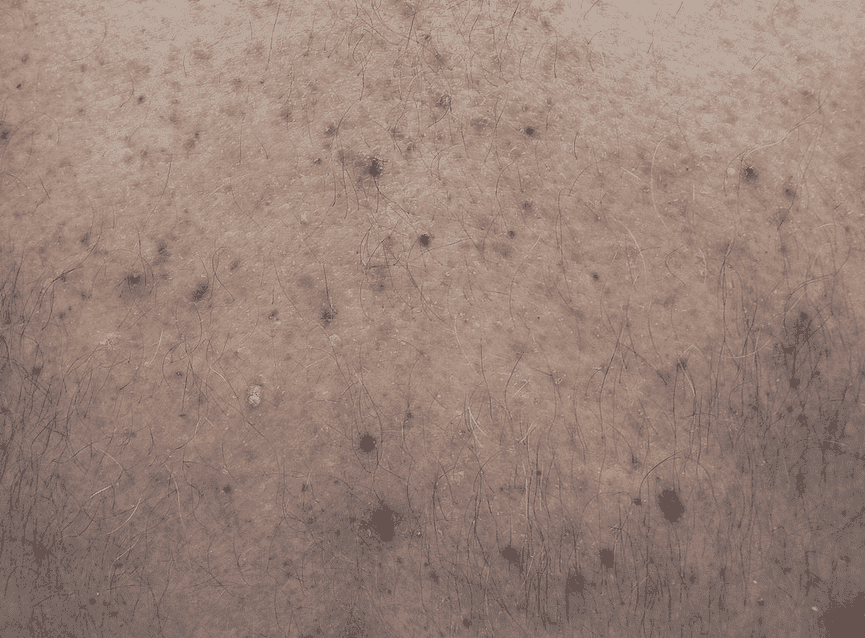The following guide explains everything you need to know about Leukemia Spots.
Leukemia is the 11th most common type of cancer in the United States, and it’s estimated that 60,650 people will be diagnosed with this disease in 2022 alone. Fortunately, with treatment, doctors can often control the cancer and help the patient manage symptoms.
But the earlier an individual recognizes signs and seeks treatment, the better – which is why it’s important for people to know what to look for if they suspect they’re ill.
One of the most visible signs of leukemia is the appearance of a rash or tiny spots on the skin, known as leukemia spots. Identifying leukemia spots is essential as, for some people, they might be the most obvious indicator that there’s a severe problem with their health.
Here’s an overview of leukemia spots and how to identify them as a potential indication of leukemia.
What Are Leukemia Spots?
Leukemia spots, also known as petechiae, are tiny round spots that appear under the skin. These spots are usually red, but they can also appear brown or purplish.
Leukemia isn’t the only health issue that is associated with petechiae. These pinpoint-sized blood spots can also be a symptom of other conditions, such as strep throat, sepsis, and scarlet fever. Some people develop them after taking common medications, including antidepressants and blood thinners.
The only way to determine if petechiae is a symptom of leukemia or something else is to visit a licensed physician who can provide a diagnosis.
What Causes Leukemia Spots?
Leukemia is a cancer of the blood that develops in the bone marrow, which is where most blood cells are produced. When someone has leukemia, a DNA of a single cell mutates, and then abnormal cells, known as leukemia cells, start developing.
Instead of maturing into healthy red blood cells, white blood cells, or platelets, the leukemia cells become non-functional cells that crowd out normal healthy blood cells. As a result, the body starts to experience a range of possible symptoms, one of which is petechiae.
When an individual or their loved one notices leukemia spots, what they’re seeing is tiny amounts of bleeding beneath the skin. This happens because there are no longer enough platelets in the blood – the disc-shaped cells that help blood clot – to assist when small blood vessels near the skin’s surface break down.
With a healthy platelet count, the platelets form a clot whenever a capillary break, preventing the blood from flowing out. But for leukemia patients with a low platelet count, there aren’t enough platelets to seal off the broken blood vessel, so the blood will be able to escape.
A low platelet count can make someone more prone to bleeding and bruising in general. That’s why leukemia patients might notice different types of marks on their skin, not just leukemia spots.
Where Do Leukemia Spots Appear?
People usually notice leukemia spots in areas of the body where blood naturally accumulates – namely, the hands, arms, feet, and legs. However, they are also common on the stomach and buttocks and can show up in other places.
How to Identify Leukemia Spots
Leukemia spots are characterized by small red (or purple or brown) dots that look scattered across the skin. They turn up in areas of the body rather than covering the whole body.
But petechiae isn’t the only skin issue leukemia patients might encounter. Some people will end up with a rash related to their cancer treatment. A skin rash is a possible side effect of conventional cancer treatments, including radiation, chemotherapy, and immunotherapy.
Rashes can also be a sign of an infection, or they can also result from leukemia complications. For example, a very small number of leukemia patients will develop a condition known as Sweet syndrome, and one of the symptoms of Sweet syndrome is a small rash that looks similar to an insect bite.
Another leukemia-related skin issue that can be confused with petechiae is leukemia cutis. This complication occurs with only one type of leukemia: acute myeloid leukemia (AML).
AML is a type of leukemia that involves the production of abnormal white blood cells (known as myeloid blasts). These cancer cells can quickly spread to other organs of the body. If the myeloid blasts infiltrate the skin, the individual will have a rash known as leukemia cutis.
Leukemia Spots vs. Rashes
While it’s easy to confuse leukemia spots and a skin rash, they’re not the same thing. The way to distinguish leukemia spots from a rash is to put pressure on the skin – if it’s a rash, the skin will turn a lighter color where the pressure is applied. With petechiae, the spots won’t change color if pressure is applied.
Leukemia Spots vs. Leukemia Cutis
Unlike leukemia spots, which appear as tiny dots underneath the skin and don’t create a raised or lumpy feel, leukemia cutis is characterized by thickened patches on the skin that feel tender to the touch or small nodules that form under the skin.
Could Petechiae Be the Only Noticeable Sign of Leukemia?
Leukemia spots can be one of the first symptoms people notice, or they can appear after a diagnosis. If someone notices what looks like leukemia spots or other strange rashes or lesions on the skin, it’s always a good idea to make an appointment with a trained medical practitioner right away to find out what’s going on.
Even if there aren’t other leukemia symptoms, like fatigue, night sweats, pale skin, or swollen lymph nodes, it’s still possible that the cancer is already developing. Also, petechiae can be a sign of other serious health issues, so anyone who notices small red dots scattered across their limbs, stomach, or other areas of the body should talk to their doctor.
Once a person knows what’s causing their skin issue, they can get started on their path toward better health.
Individuals looking for natural cancer treatments to help the body heal should contact Brio-Medical today.




